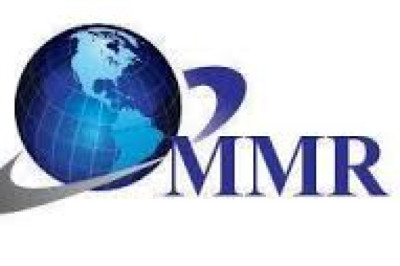views
In a world of content proliferation, where media files, digital learning materials, and personal documents have grown exponentially, the conventional hard drive just can't keep pace. Enter Network Attached Storage (NAS), a powerhouse storage solution that evolves with our needs — offering exceptional capacity, security, and versatility. If you've ever felt the pinch of data limitations, it might be time to join the NAS revolution, and here's why.
Introduction to Network Attached Storage (NAS)
- What is NAS?
Network Attached Storage, or NAS, simplifies the way we store and access data. Unlike traditional storage like external hard drives or USB sticks, Network attached storage is designed to be a central location for all your digital content and can be accessed from multiple devices in multiple locations. It effectively turns your home or office into a small-scale cloud storage service.
- How Does It Work?
At its core, a NAS device is a specialized file server that's optimized for storage efficiency and data redundancy. It connects to a network, most often a home or business local area network (LAN), and can be accessed through a dedicated network address.
- Who Benefits from NAS?
Everyone from solo professionals to large corporations can find value in a NAS system. For tech enthusiasts looking to streamline their digital lives to small businesses seeking cost-effective network storage, NAS offers a spectrum of benefits.
The Evolution of Storage Technology
Over the past few decades, the evolution of storage media has been nothing short of dramatic. We've gone from floppy disks that could hold a mere 1.44 MB of data to solid-state drives (SSDs) that can store terabytes. Here's a quick look at the leapfrogging that has led us to the NAS era:
- The Age of Magnetic Drives
Remember the audibly satisfying hum of your first computer? That was music to the ears of the trusty hard disk drive (HDD) which, thanks to its magnetic storage, became the de facto storage solution for decades.
- Enter the Solid State
SSDs marked the shift from moving parts to microchip-based storage, significantly boosting performance and reliability. This leap prompted a re-imagining of how data is stored and accessed.
- The Rise of Networked Storage
With the exponential growth of digital data, the need for a centralized, network-connected storage system became acute. This ushered in the era of NAS — the next step in creating accessible, scalable, and secure storage.
Advantages of Upgrading to NAS
-Scalability and Flexibility
One of the biggest advantages of NAS is its scalability. You can start with a single drive and expand to several, without losing any data or experiencing downtime. This 'many size fits all' approach is just what's needed in a rapidly changing digital environment.
- Data Protection with Redundancy
NAS systems often include RAID (Redundant Array of Independent Disks) configurations, offering varying levels of data redundancy. This means your data is safe even if a drive fails, a crucial feature for both personal and professional use.
- Media Streaming and Sharing
With NAS, media stored on the device can be streamed to various compatible devices like TVs, gaming consoles, and smart speakers, making it a perfect entertainment hub for homes and small offices.
Comparison of NAS vs. Traditional Storage Solutions
- Reliability
If a NAS device's hard disk fails, RAID configurations enable automatic data rebuild from the redundant drives. In contrast, a single hard drive failure in a traditional setup can lead to data loss.
- Remote Accessibility
NAS devices can be set up to allow secure, remote access to your files over the internet. Traditional storage solutions lack this capability, often requiring physical access to retrieve data.
- Expandability
NAS solutions can expand their storage capacity seamlessly as you purchase additional hard drives. Traditional setups often require careful planning and potentially adverse downtime for expansions.
Key Features and How They Benefit Users?
- On-The-Fly Data Compression
Some NAS systems offer the ability to compress data on the fly, which can significantly save on storage space, especially for text-based or compressible files.
- Automated Backups
Prevent against loss of critical data with NAS systems that feature automated backups. You can schedule backups for specific times or trigger them based on certain events, ensuring you always have a safe copy of your data.
- Energy-Saving Modes
Many NAS models are designed with energy-efficiency in mind, featuring modes that automatically power down drives or the entire unit during periods of inactivity, without compromising on accessibility.
- Virtualization Support
For tech enthusiasts exploring home server virtualization, NAS can act as a virtualization target, running multiple operating systems and applications concurrently, further maximizing its utility.
Guide to Setting up and Using NAS
- Choosing the Right NAS for You
Selecting the perfect NAS device involves considering factors like your storage needs, budget, and desired features such as number of drive bays and maximum capacity.
- Installation and Configuration
Once you've chosen your NAS, follow the manufacturer's instructions for installation. Configure basic settings like network connectivity, user accounts, and drive organization.
- Data Migration
Moving data over from your existing storage to NAS can be a breeze with the right tools and a good organization plan. This is a great time to review and clean up your data, ensuring you're moving over only what's necessary.
Future Trends in Storage Technology
- Cloud Integration
The future of NAS is likely to be deeply intertwined with cloud technology, offering seamless integration between local and remote storage resources.
- AI and Data Management
We're seeing the hype around AI reflected in storage technology, too. AI tools can improve how data is managed and accessed, unlocking new potential for scale out NAS in big data analytics and machine learning initiatives.
- Security Enhancements
Cybersecurity threats continue to evolve, and NAS systems are no exception. Future solutions are expected to integrate even more robust security protocols, ensuring that your data remains your data.
Conclusion
Network Attached Storage is not just for tech geeks anymore; it's a practical and reliable solution for anyone who values their data. Whether you're upgrading your home media server, looking for a better backup solution, or seeking a scalable storage plan for your growing business, NAS delivers on all fronts. The flexibility, performance, and peace of mind that come with NAS systems make them an investment in efficient data management and a glimpse into the digital horizon of the future. It's time to unplug the limitations and plug into the possibilities of NAS.











